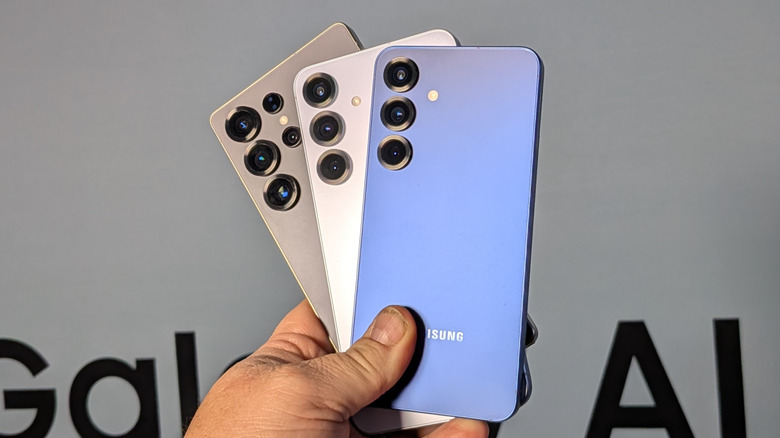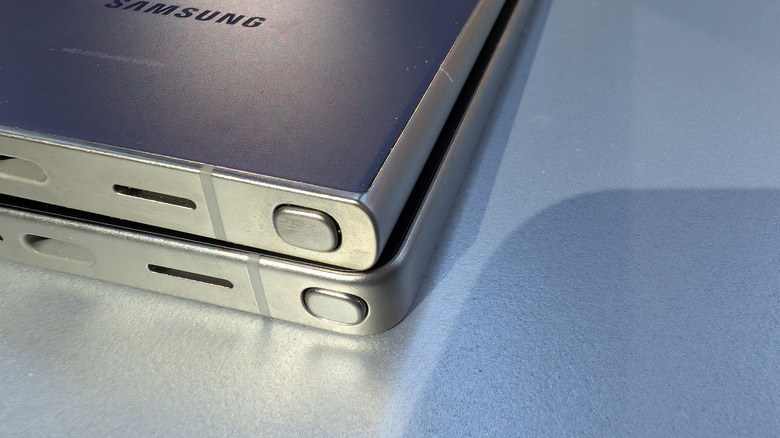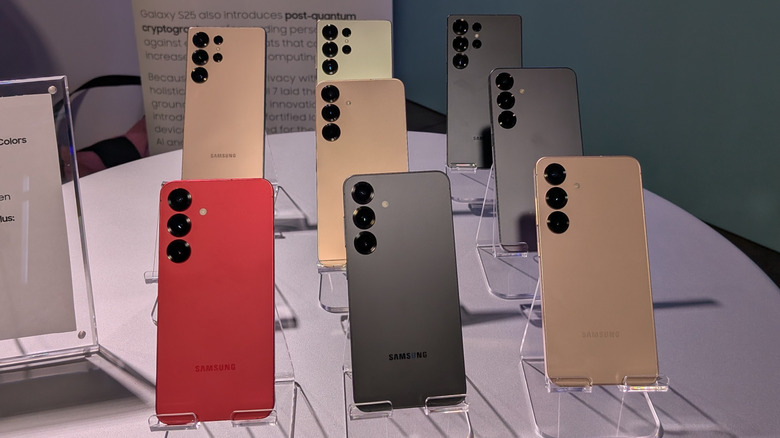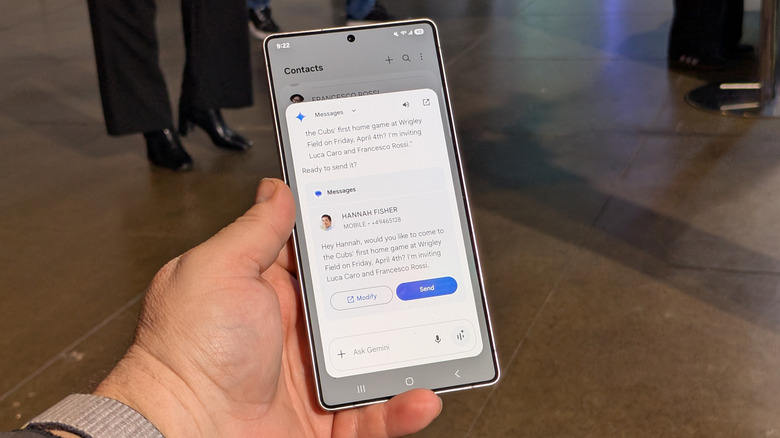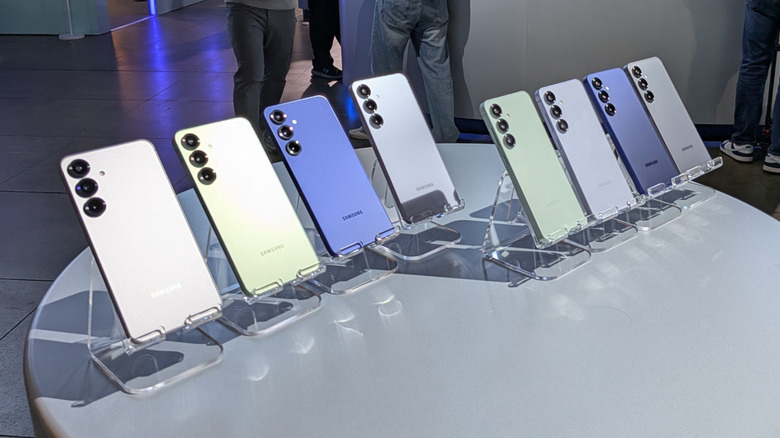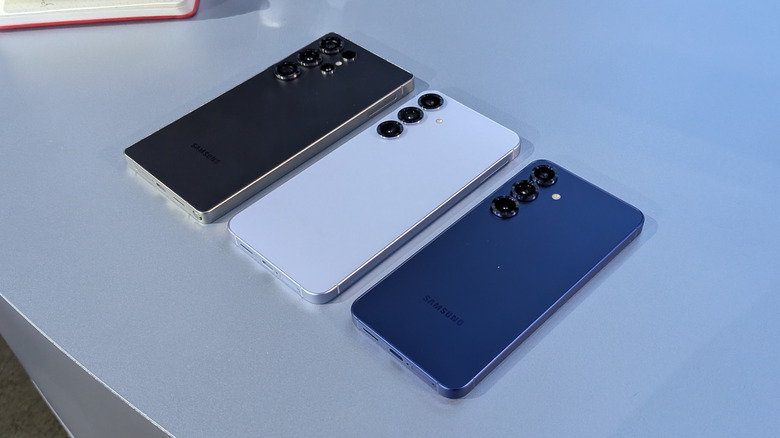Samsung Galaxy S25 Hands-On: Features, Flaws And First Impressions
It's time again for another Samsung Unpacked event, this time in San Jose, CA. Samsung flew me out to the city to witness the proceedings, and we also got to spend time with the devices that Samsung launched. Just like in years past, Samsung launched its next flagship smartphone line: the Galaxy S25, S25 Plus, and S25 Ultra — and, even better, the company kept the same pricing for all three.
Unfortunately, or fortunately (depending on your taste), Samsung kept a lot of other things the same, as well. The design of the phones is only very slightly changed. Putting the Samsung Galaxy S24 Ultra next to the S25 Ultra, you get one very welcome change in the design, but a lot of the rest of the phone feels similar to years past.
What is new are the AI features packed within. Samsung has made no secret about the fact that it feels AI is the next big thing, and it has developed a few interesting features that could be pretty cool on this generation of devices. I spent about 90 minutes with Samsung's new phones. Here's what I learned.
The design update brings a key improvement
The biggest design change that Samsung made comes in the corners of the S25 Ultra. Those corners are now rounded, and to be frank, thank goodness. One of the harshest criticisms about the S24 Ultra was how much it dug into your palm when holding it in one hand. That will no longer be the case. Each phone is lighter than its predecessor, though only by 15 grams on the S25 Ultra, and single-digit grams on the S25 and S25+.
The camera modules have adopted the same look that we saw on the Galaxy Fold 6 from last year. The bezels around the lenses are thicker with a bit more character, which is a nice touch. Also, the backs of the phones are close to iridescent, changing color depending on which angle you're looking at it. This is most obvious in the Navy colorway which almost shifts to black at the right (or wrong) angles.
Beyond those tweaks, there is little that is visually different between the S25 series and three generations of its predecessors. Line up a Galaxy S22 Ultra, S23 Ultra, S24 Ultra, and S25 Ultra and demand I pick out the right one, and there's a 75% chance I'm going to fail.
Internal hardware changes
On the inside, things get more interesting. There are a few major changes to the components that are worth writing about. The first is the typical generational upgrade of the phone's processor. Again, Samsung collaborated with Qualcomm to develop the Snapdragon 8 Elite For Galaxy processor. According to Samsung, the two companies collaborated to develop a custom Application Processor (AP) this time around. Last year, the "for Galaxy" branding added a bit more power and performance to the processor — this year will probably be the same.
One other thing Samsung added to the S25 Ultra is a new 50-megapixel ultrawide sensor to the mix. For those keeping score at home, that means the cameras on the Galaxy S25 are as follows: a 50-megapixel ultrawide camera, a 200-megapixel main camera, a 10-megapixel 3x telephoto zoom lens, and a 50-megapixels 5x zoom lens. The 50-megapixel ultrawide lens should mean more detail in .6 zoom, and also with macrophotography.
Another photographic change is the improvement of nightography. Specifically, Samsung is implementing double-analysis noise removal from video which should help get rid of pixelation in the blackest areas. It's doing this on the fly, on the device, with no cloud processing, which is a nice step over Google's Night Sight Video — assuming it works properly. We'll figure that out in the review.
One other note: despite the fact that the S25 is rated for Qi2 wireless charging, there are no magnets in the phone. Like the OnePlus 13, Samsung stopped just short of that implementation, much to my chagrin. Samsung representatives noted that most people put a case on their phones, and they wanted to keep weight and thickness down. Well, Apple likes to keep those things down too, and guess what?
Even more AI
As we've come to expect, Samsung is adding even more AI into the phone, and as we've come to expect, some of it works well, some doesn't work at all, and some other stuff works just okay. The neat part comes with Cross App Action. Basically, this is a multistep action you can take with a single spoken command. Things like "Look up the Cubs' first home game and add it to my calendar" will do just that. You can also say, "Invite XYZ Contact to my next calendar event" and the AI will compose a message for you.
At the same time, things got a little wacky. The command "Add the Cubs Spring Training schedule to my calendar" resulted in one event added that lasted from the middle of February until the end of March. "Invite Billy, Johnny, and Max to join me at the Cubs home opener" resulted in a text message to Billy that ended with, "By the way I also invited Johnny and Max," but didn't actually compose text messages to the latter two.
Some of the AI didn't work at all. In the side bar, there's a new app called "Drawing assist" that lets you sketch items and/or add a text prompt to what you'd like to see. The app has a way to import a photo, but when I did that and asked the AI to add a Santa's hat on someone's head, or place a cat on a counter, it completely invented a new image rather than modify the imported photo.
I really like Cross App Actions, and I really hope that's something that Google implements into Android in the not-too-distant future.
Personal Data Engine
Finally, Samsung has some AI that is going to take some long-term testing to evaluate, and even a one- or two-week review period may not be enough. The Personal Data Engine is, according to Samsung, like a personal LLM that's built by you and what you do on your phone. The Personal Data Engine can, over time, suggest routines for you to set up to help automate your life. This data engine only works on Samsung devices and can only be moved to another Samsung device.
This data engine is tied into Samsung SmartThings as well. One cool implementation involves your Samsung wearable and your Samsung TV. If you typically use your TV to help you fall asleep — which, according to Samsung, 42% of Americans do (including myself) — your Personal Data Engine can see that you are falling asleep, and when it detects you are asleep, it will lower your TV's volume over about 10 seconds, then turn the TV off for you. Is that cool? Yes. Does that mean you need a Samsung wearable, Samsung phone, and Samsung TV? Also, yes.
Samsung will also give you a Now bar on your phone's lock screen that can show you news updates and team scores — and if this sounds a lot like the iPhone's Live Activities, that's because it is. But it's cool to see this on an Android phone, so I'm here for it.
The S25 series in a nutshell
Overall, there are some good improvements here over the previous generation, but it's very hard to see a world in which an S24 owner needs to upgrade to the latest generation. The changers brought to the hardware are fairly incremental. I won't argue that the corners needed to be round and that the ultrawide neglect rampant in this industry had to come to an end.
The most interesting changes come from the AI adaptations, and that's both a good thing and a bad thing. It's a good thing because AI may finally become useful on a day-to-day basis. It's a bad thing because it will take more than 90 minutes to really dive into these features and evaluate them. Overall, I'm excited by these features far more than I am about the design of the phones themselves. There's a fine line between maintaining your design language and resting on your laurels. Hopefully, these software updates make the phone an interesting device, and the camera setup keeps getting better.
